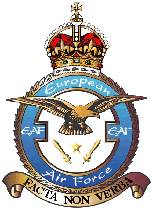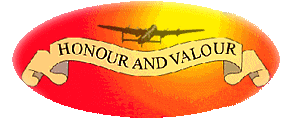 |
 |
 |
Medals
| Medal | Description | Bars | EAF use |
|---|---|---|---|
Victoria Cross |
For most conspicuous bravery or some daring or pre-eminent act of valour or self-sacrifice or extreme devotion to duty in the presence of the enemy. | For additional acts of bravery | 200 kills in one carreer |
 George Cross |
Awarded for acts of the greatest heroism of the most conspicuous courage in circumstances of extreme danger. The Cross is intended primarily for civilians and award in the military services is to be confined to actions for which purely military honours are not normally granted and awarded for actions not in the face of the enemy. | For additional acts of gallantry | 100 kills in one carreer |
 The Most Honourable Order of the Bath |
The Order has a civil and a military division and it is awarded for service of the highest order (in wartime it is awarded to Senior Officers who must have been mentioned in dispatches). The Order was founded during the time of the Prime Minister Sir Robert Walpole. The title of the order was derived from the ancient ritual of bathing or cleansing which was symbolic of washing away any impurities before admission to the Order. | An average kill/loss ratio of 5 or better after more than 10 missions in one life. | |
 The Distinguished Service Order |
Established for rewarding individual instances of meritorious or distinguished service in war. This is a purely military order and is only given to officers whose service has been marked by the special mention of his name in despatches for distinguished services under fire, or under conditions equivalent to service in actual combat with the enemy. | Awarded where the individual performs an approved act of gallantry which would have entitled him to the Order in the first place. | 50 kills in one carreer |
 The Order of the British Empire |
The Military Division is awarded for service in the field or before the enemy or for services to the Empire (Commonwealth). Member (M.B.E.) is part of the five-level hierarchy of the Most Excellent Order of the British Empire. | A silver emblem of two oak leaves is worn on the riband when the appointment to the Order is for Gallantry. | 5 years of duty |
 The Military Cross |
Awarded to Officers of the rank of Captain or lower including Warrant Officers, for gallant and distinguished services in action | For additional acts of bravery; straight silver bar with crown. | 300 kills total |
 The Distinguished Service Cross |
Awarded to Naval and Marine Officers, Commanders or below, including Warrant Officers (or equivalent), for meritorious or distinguished services before the enemy. Members of the Air Force and Army serving with the fleet were also eligible. | For additional acts of gallantry. (Convex silver bar with a crown). | 200 kills total |
The Distinguished Flying Cross |
Awarded to Officers and Warrant Officers for an act or acts of valour, courage, or devotion to duty performed whilst flying in active operations against the enemy. | For additional acts of bravery. Silver bar with an eagle in centre. | 25 kills in one carreer |
The Air Force Cross |
Awarded to Officers and Warrant Officers for an act or acts of valour, courage or devotion to duty whilst flying but not in active operations against an enemy. | Awarded for additional acts of gallantry (silver laurelled bar). After 1957, a silver emblem of two oak leaves was awarded with the medal when it was awarded for gallantry. The oak leaves would also be worn on the ribbon in undress. In undress, the recipient of the bar wears a rosette. | 5 kills in one carreer (equal to the RAF ace status) |
 The Royal Red Cross |
Awarded to a Nurse, Nurse's Aid or Volunteer who has performed an exceptional act of bravery and devotion to her post of duty. Membership is limited to 5% of establishment and members are called Associates and use the initials A.R.R.C. | For additional acts of gallantry | Repeatedly helping friends in trouble: killing enemy hunting one of us. To be reported by someone. |
 The George Medal |
Awarded only for acts of great bravery and is intended primarily for civilians and awards to the military services is confined to actions for which purely military honours are not normally granted. | For additional acts of bravery. (silver laurelled bar, slip on type) | 100 kills total |
 The Distinguished Flying Medal |
Awarded to Officers and Warrant Officers for an act or acts of valour, courage or devotion to duty whilst flying but not in active operations against an enemy. | For additional acts of bravery. (Bar as to DFC) | 50 kills total |
The Air Force Medal |
Awarded to non-commissioned officers and men for an act or acts of exceptional valour, courage or devotion to duty whilst flying, though not in active operations against the enemy. | For additional acts of bravery. (Bar as to DFC) | 25 kills total |
 The British Empire Medal |
Introduced in 1917 as part of the Order of the British Empire for those who have rendered important services to the Empire. In 1918, a military division was created for all commissioned, warrant and subordinate officers of the military services. | Awarded for additional acts of gallantry (silver laurelled bar). After 1957, a silver emblem of two oak leaves was awarded with the medal when it was awarded for gallantry. The oak leaves would also be worn on the ribbon in undress. In undress, the recipient of the bar wears a rosette. | For special contribution to the EAF |